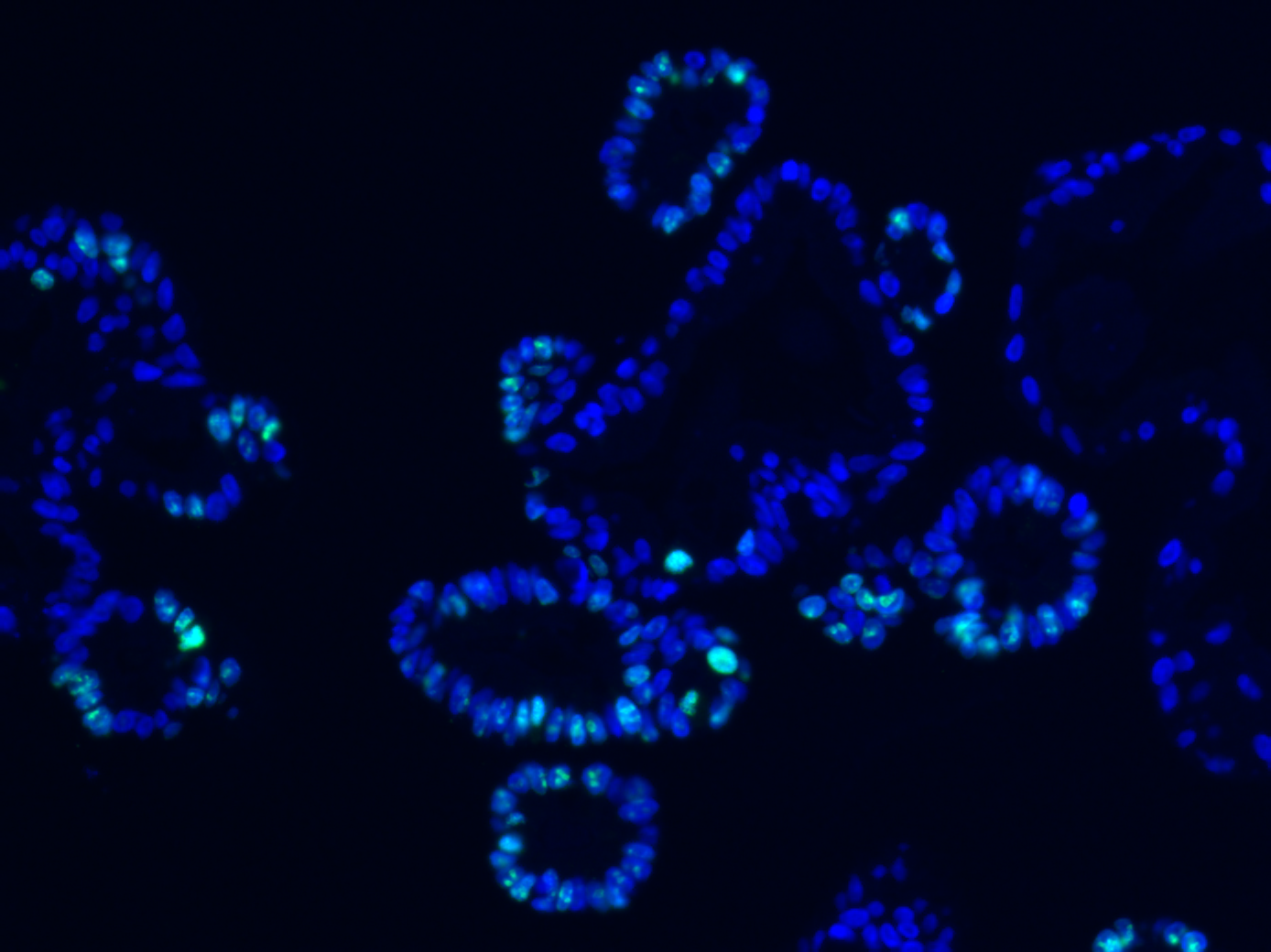Intestinal organoids are 3D structures that mimic the function and architecture of the intestine, including the presence of differentiated cell types. Epistem’s intestinal organoid model allows assessment of multiple Test Items in a 96- or 48- well plate format. The effects of the Test Item exposure can be assessed within 7 days.
Simultaneous assessment of multiple endpoints can be provided. Organoids are visually scored for viability and branching ability, and total viability measured with a luminescent ATP- based assay. IC50/EC50 values can be calculated from the dose-response curves.
Intestinal organoids are available from different species.
Additionally, intestinal organoids can be modified to mimic specific diseases, providing a powerful tool for studying disease mechanisms and developing new treatments.
Intestinal organoids offer several readouts, including:
- Viability and proliferation
- Immunofluorescence (IF)
- Immunohistochemistry (IHC)
- Gene expression (NGS, array, PCR)
- ELISA
- Cytokine profiling
- Flow cytometry
- In situ hybridisation (RNAscope)



